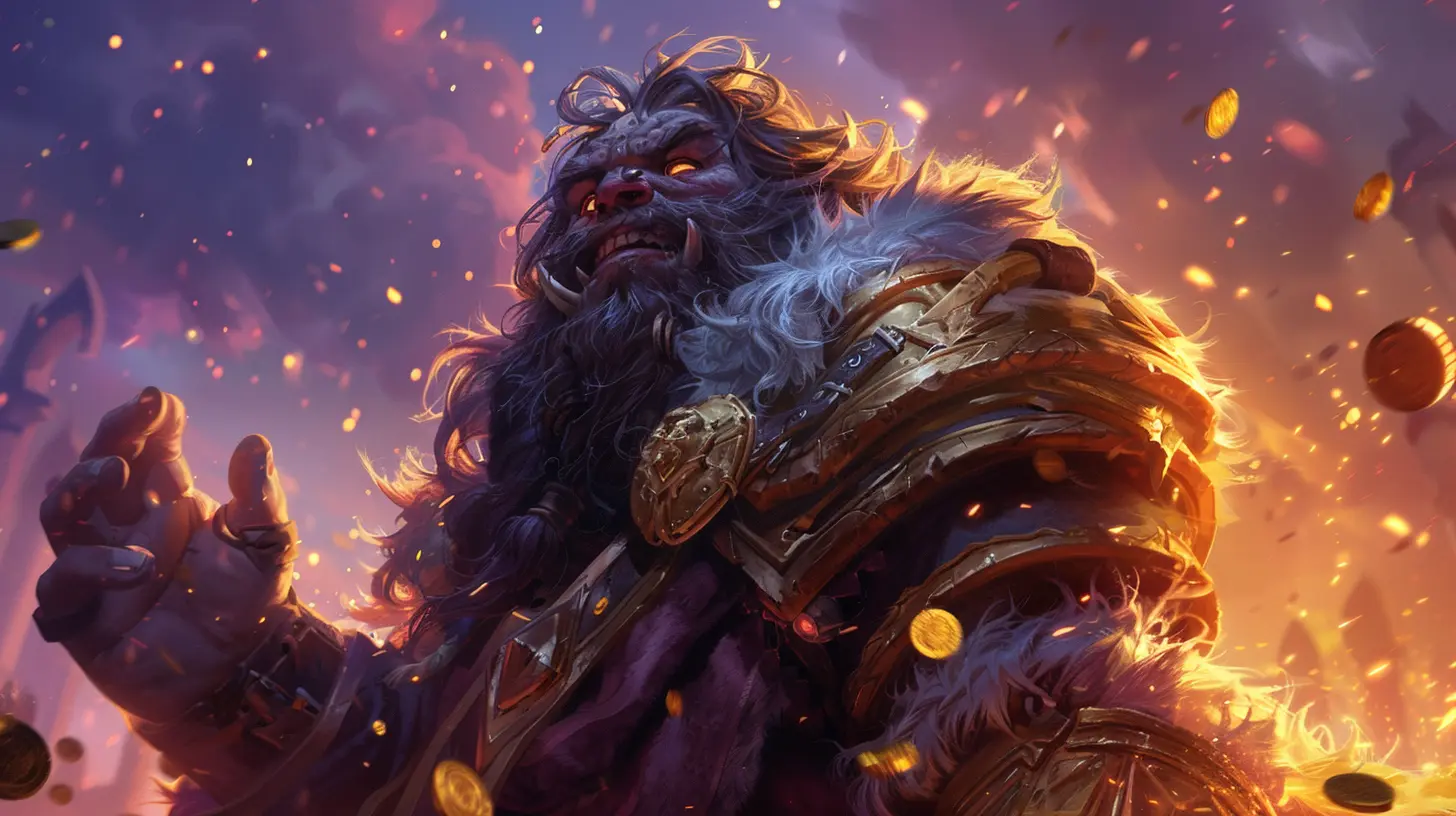The Rise of Battle Passes: Are They a Better Alternative to Traditional Microtransactions?
30 September 2025
If you’ve been around the gaming world for even a hot minute, chances are you’ve heard the term “battle pass” tossed around like a grenade in a heated match. Once a niche feature, it’s now taking over the gaming industry faster than you can reload a digital rifle. But what exactly is a battle pass? Why is everyone jumping on this bandwagon? And more importantly, is it actually better than the microtransactions we’ve all grown to... well, let’s just say “tolerate”?
Let’s dive straight in and unpack this phenomenon.
What Is a Battle Pass Anyway?
Alright, let’s start with the basics. A battle pass is essentially a seasonal progression system that rewards players with various in-game goodies—think cosmetics, skins, emotes, and even in-game currency—just for playing the game.But here’s the kicker: while many games offer a free version of the pass, the real loot lies behind a paid tier, which typically costs around $10 per season. Complete challenges, rack up XP, and watch your reward meter tick up like a holiday wishlist.
Think of it like this: instead of impulse-buying a candy bar every time you check out (hello, microtransactions), you’ve now got a subscription-style grocery bag full of treats you earn over time. Cool, right?
The Old Guard: Traditional Microtransactions
Before battle passes came strutting in with their slick seasonal content, we had the infamous microtransactions. Ah yes, who could forget?Microtransactions are those pesky little prompts asking you to pay $2.99 for that shiny sword or $9.99 for a loot box that might contain something cool. Emphasis on “might.”
They’re the digital version of those annoying claw machines—you keep dropping coins hoping to score, and more often than not, you walk away with a keychain instead of the giant teddy bear.
And while they’ve helped companies rake in billions (yes, billions with a “B”), they’ve also drawn criticism for being predatory, unfair, and—let’s be honest—kind of annoying.
So… Why Are Battle Passes Catching Fire?
Good question.At their core, battle passes feel more… honest. Gamers know what they’re getting. No roulette wheel. No expensive surprises. Just a clear path of rewards for engaging with the game.
Let’s break it down:
1. Predictability
When you buy a battle pass, you can usually see every single reward ahead of time. No mystery boxes. No dice rolls. You’re not gambling away your paycheck hoping for a 1-in-a-million drop. It’s all laid out. Black and white.2. Encourages Continued Play
Battle passes kind of tap into that “achievement hunter” in all of us. They’re like a checklist for gamers: kill 100 zombies? Check. Win three matches in a row? Check. Dance on top of a mountain wearing a banana suit? Check. And with every challenge completed, you inch closer to those snazzy new skins.It creates a loop of progression that feels satisfying. You’re not just playing—you’re working toward something.
3. Better Value (Usually)
Let’s put it this way: a single microtransaction might get you one outfit for $15. But a $10 battle pass could potentially unlock dozens of cosmetic items, XP boosts, and in-game currency—if you actually put in the time.It’s like going to an all-you-can-eat buffet instead of buying food à la carte. More bang for your buck.
The Games That Made It Mainstream
While battle passes have existed in various forms for a while, it was Epic Games’ Fortnite that truly kicked the doors open.In 2018, Fortnite’s Battle Pass sparked a trend that snowballed across the industry. Games like Apex Legends, Call of Duty: Warzone, PUBG, Rocket League, Destiny 2, and even Halo Infinite followed suit.
These games realized something critical: by giving players something to strive for, they’d stick around longer—and maybe even spend more.
Smart, right?
But Wait – Are Battle Passes Really That Great?
Let’s pump the brakes for a second. For all their perks, battle passes aren’t perfect.1. FOMO Is Real
Fear of Missing Out (FOMO) is a big deal here. Battle passes are usually time-limited. If you don’t finish earning all the rewards before the season ends? Sayonara, loot.This creates pressure—some might even say stress—to play constantly. Like a 9-to-5 job you didn’t sign up for.
2. Time Commitment
Not everyone has the luxury of grinding for hours every week. Some gamers have work, school, or, you know, a life outside of games. For them, battle passes might feel more like a chore than fun.If you’re paying for a pass but don’t have time to complete it, is it really a better alternative?
3. The "Pay-to-Progress" Problem
Some battle passes let players buy tiers outright. That means someone with deep pockets can steam ahead while others grind away. It’s not as bad as loot boxes, but it still raises eyebrows.Battle Passes vs. Microtransactions: The Showdown
Let’s throw both systems into the ring and see how they stack up.| Feature | Battle Pass | Microtransactions |
|--------|--------------|-------------------|
| Transparency | ✅ Clear rewards | ❌ Often random |
| Value | ✅ More items per dollar | ❌ Can be expensive |
| Player Retention | ✅ Encourages engagement | ❌ One-off spending |
| FOMO/Time Pressure | ❌ High | ✅ Low |
| Accessibility | ✅ Everyone can earn something | ❌ Often favors spenders |
Verdict? Battle passes seem to offer more value, more fun, and less shady monetization—but they’re not flawless. It really boils down to how the system is designed and how much time you’ve got to spare.
Are Battle Passes Here to Stay?
Honestly? All signs point to yes.Game developers love them because they boost engagement and generate predictable revenue. Players—at least a good chunk of them—prefer them over getting nickel-and-dimed at every turn.
But the key to their success lies in balance. Too grindy? Players get burnt out. Too easy? It loses value. Add in a splash of creativity, a pinch of fairness, and you’ve got a recipe seasoned for success.
What Could Be Next?
Here’s something wild to think about: we're already seeing hybrid models. Games mixing battle passes with microtransactions, free seasonal events, and even subscription services (hello Xbox Game Pass and PlayStation Plus).Who knows? Maybe the future holds something even better—a universal battle pass that works across multiple games. Okay, maybe now we’re dreaming, but hey, we’ve seen crazier things happen (looking at you, Fortnite-Metaverse collabs).
Final Thoughts
Let’s be real—no one loves the idea of spending real-world money in virtual worlds. But if it has to happen, at least battle passes feel like a smarter option. They offer structure, value, and a sense of achievement that microtransactions simply don’t.Sure, they’ve got their downsides. And yes, not every battle pass system is created equal. But when done right? They’re less of a cash grab and more of a handshake deal between developers and players.
At the end of the day, it’s about choice. Want to grind and earn cool stuff? Go for it. Prefer to just play casually and ignore it all? No biggie.
So are battle passes a better alternative to traditional microtransactions?
Most gamers would probably say: “Yeah, absolutely—*as long as they don’t get greedy with it.
all images in this post were generated using AI tools
Category:
MicrotransactionsAuthor:

Greyson McVeigh
Discussion
rate this article
1 comments
Katalina McLaughlin
The rise of battle passes offers a balanced approach to monetization, incentivizing player engagement and progression. Unlike traditional microtransactions, they provide value through content and rewards, making the gaming experience more rewarding and enjoyable.
October 25, 2025 at 4:36 AM

Greyson McVeigh
Thank you for your insight! Battle passes do indeed provide a structured way to enhance player engagement while also delivering value through meaningful rewards. Your perspective highlights an important shift in how games monetize while prioritizing player experience.


